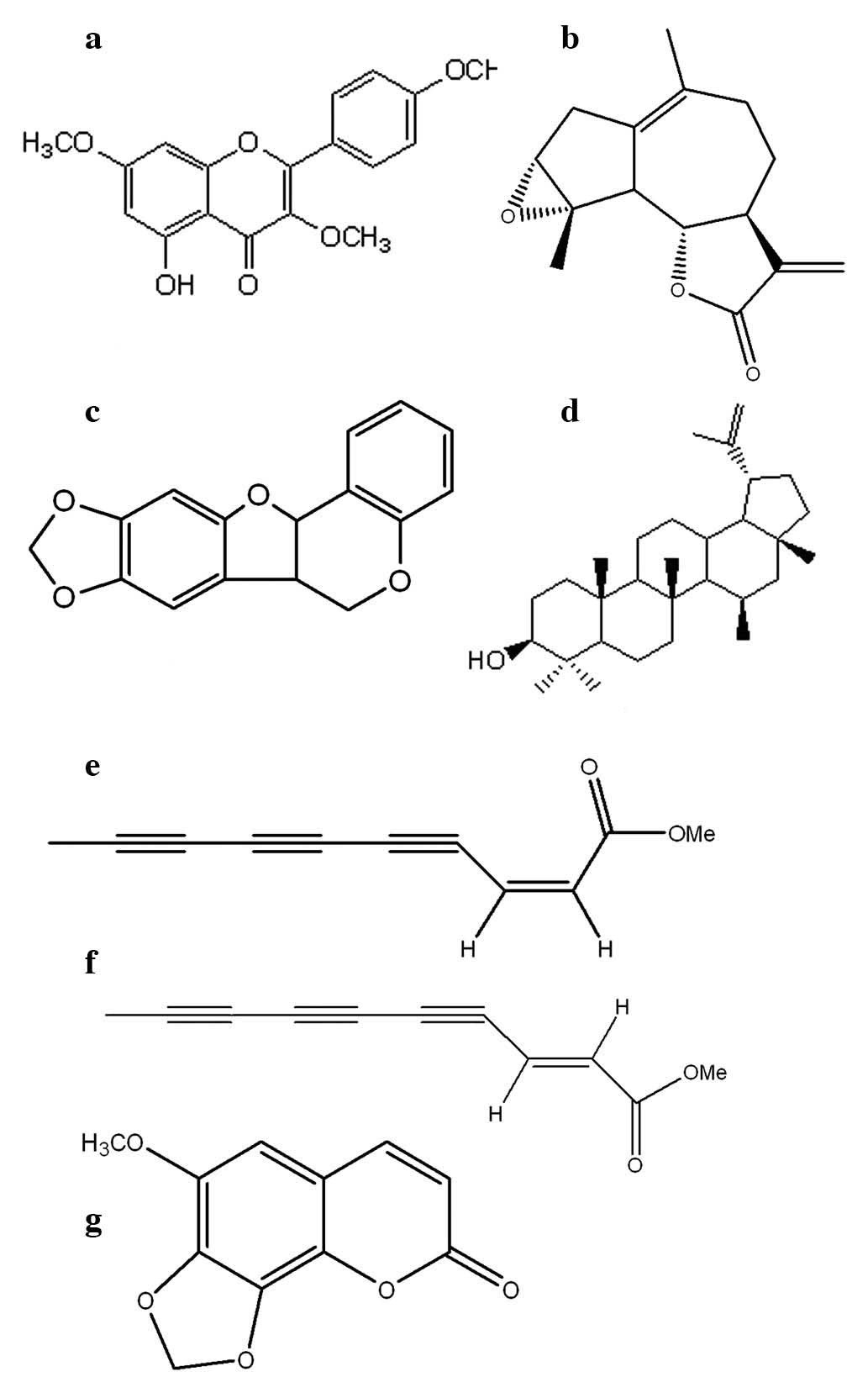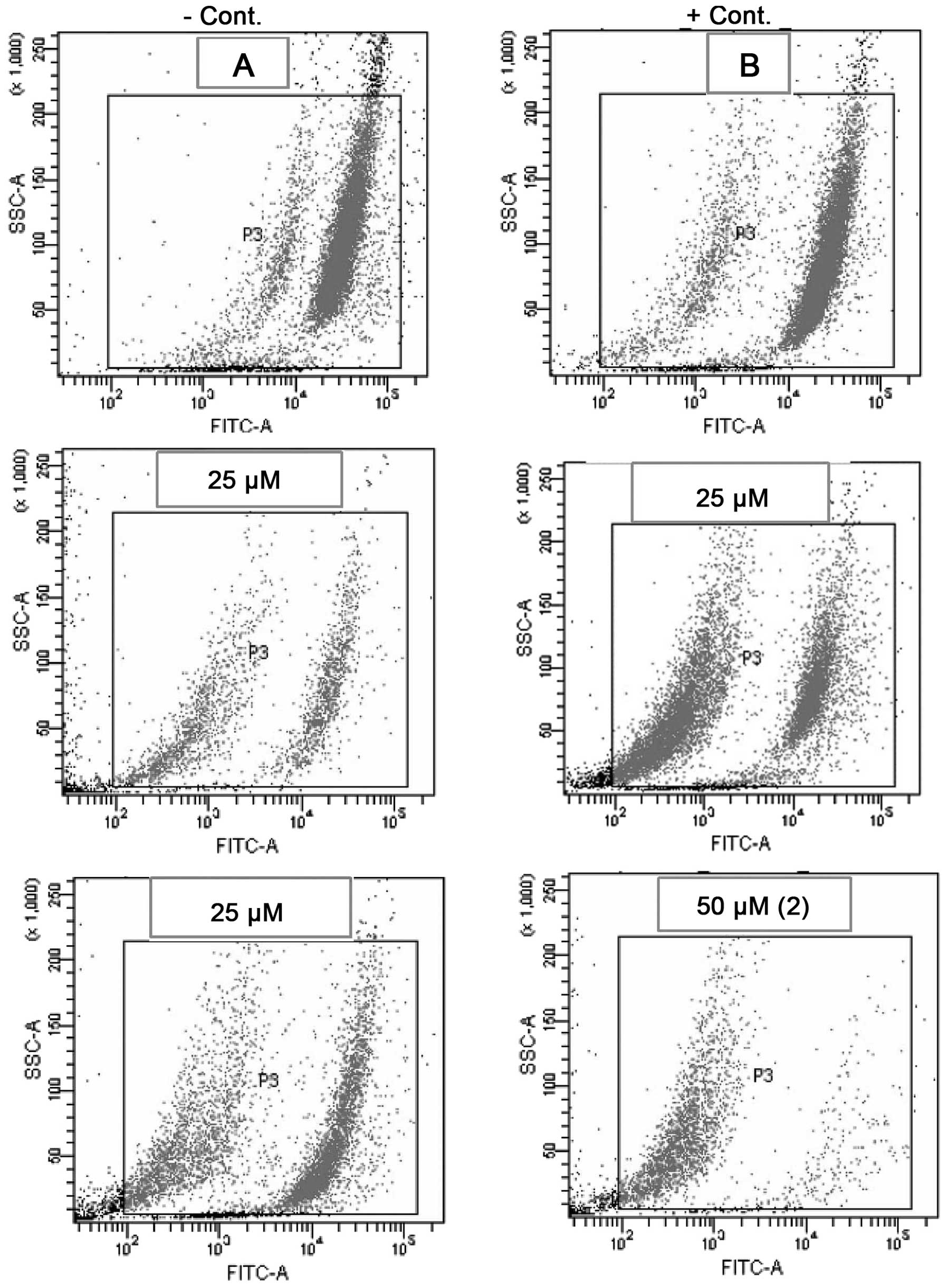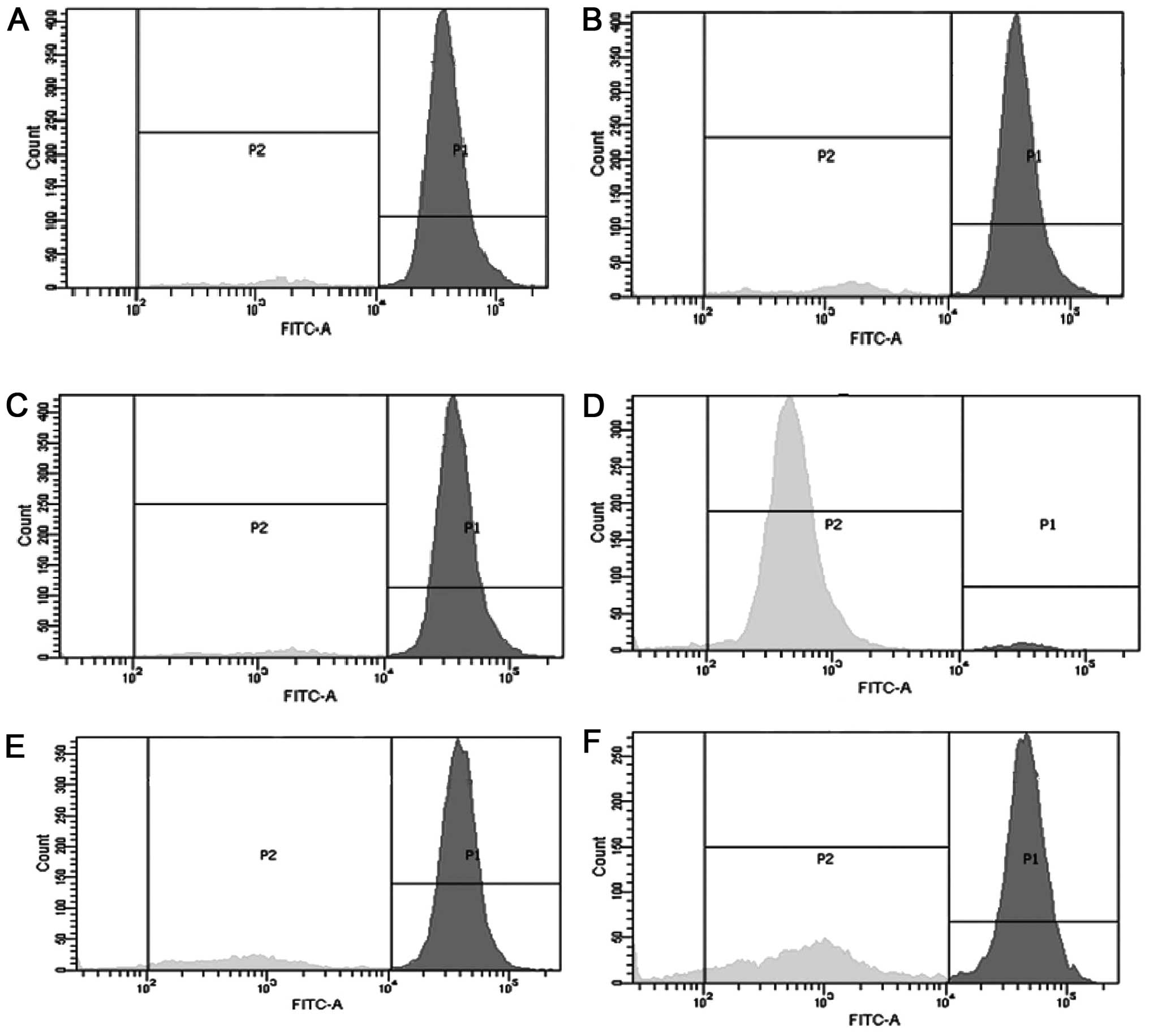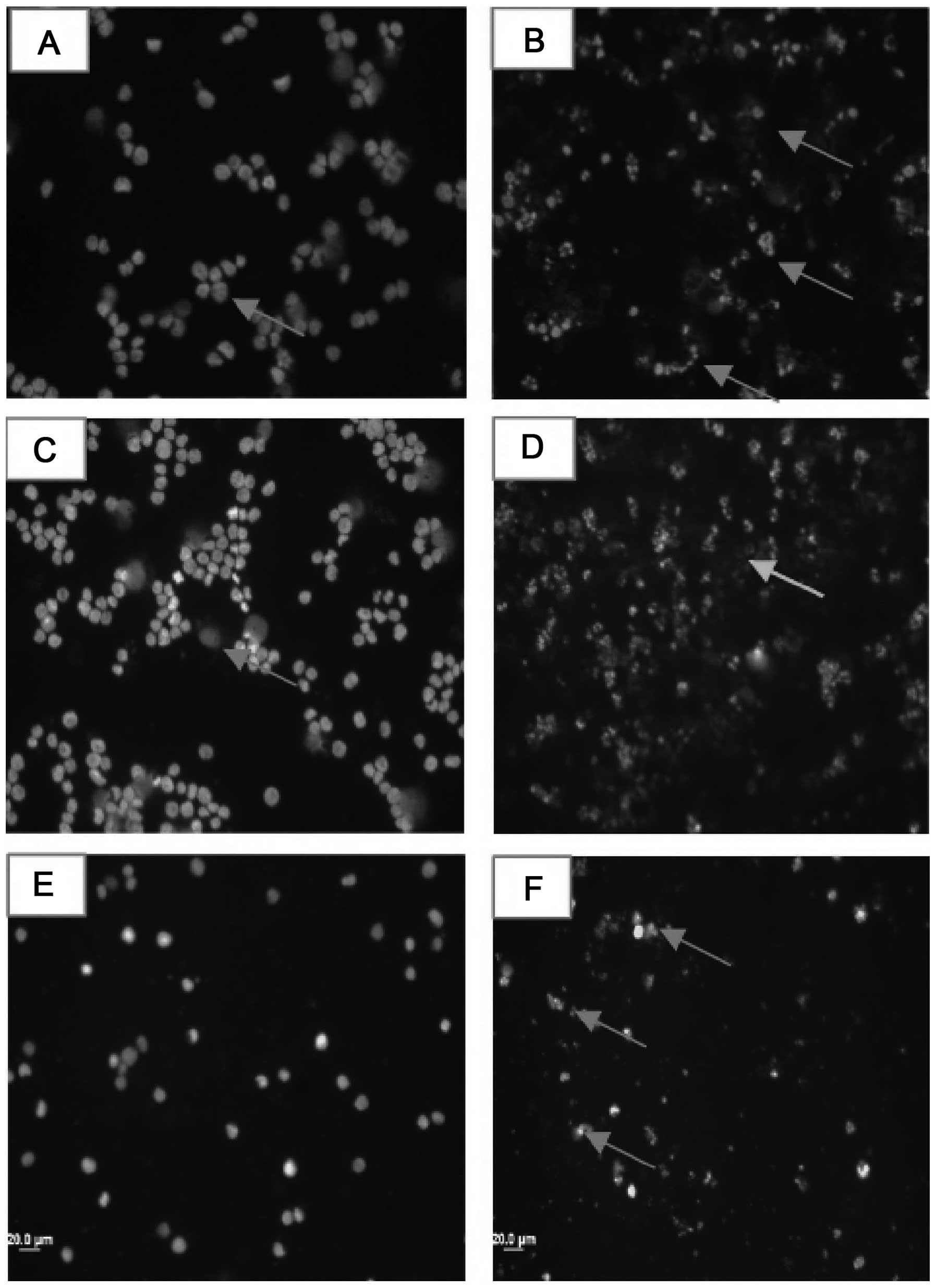|
1
|
World Health Organization. Promoting the
role of traditional medicine in health systems: a strategy for the
African region 2001–2010. Harare: World Health Organization;
2000
|
|
2
|
Li JW and Vederas JC: Drug discovery and
natural products: end of an era or an endless frontier? Science.
325:161–165. 2009. View Article : Google Scholar : PubMed/NCBI
|
|
3
|
Ma X and Wang Z: Anticancer drug discovery
in the future: an evolutionary perspective. Drug Discov Today.
14:1136–1142. 2009. View Article : Google Scholar : PubMed/NCBI
|
|
4
|
Gordaliza M: Natural products as leads to
anticancer drugs. Clin Transl Oncol. 9:767–776. 2007. View Article : Google Scholar : PubMed/NCBI
|
|
5
|
Madhuri S and Pandey G: Some anticancer
medicinal plants of foreign origin. Curr Sci India. 96:779–783.
2009.
|
|
6
|
Harvey AL: Medicines from nature: are
natural products still relevant to drug discovery? Trends Pharmacol
Sci. 20:196–198. 1999. View Article : Google Scholar : PubMed/NCBI
|
|
7
|
Newman DJ, Cragg GM and Snader KM: The
influence of natural products upon drug discovery. Nat Prod Rep.
17:215–234. 2000. View
Article : Google Scholar : PubMed/NCBI
|
|
8
|
Mann J: Natural products in cancer
chemotherapy: past, present and future. Nat Rev Cancer. 2:143–148.
2002. View
Article : Google Scholar
|
|
9
|
Bray F, Ren JS, Masuyer E and Ferlay J:
Global estimates of cancer prevalence for 27 sites in the adult
population in 2008. Int J Cancer. 132:1133–1145. 2013. View Article : Google Scholar
|
|
10
|
Saleem K, Wani W, Haque A, Milhotra A and
Ali I: Nanodrugs: magic bullets in cancer chemotherapy. Topics in
Anti-Cancer Research. 2. Bentham Science Publishers; pp.
437–494
|
|
11
|
Reichert JM and Wenger JB: Development
trends for new cancer therapeutics and vaccines. Drug Discov Today.
13:30–37. 2008. View Article : Google Scholar : PubMed/NCBI
|
|
12
|
Carnesecchi S, Schneider Y, Ceraline J, et
al: Geraniol, a component of plant essential oils, inhibits growth
and polyamine biosynthesis in human colon cancer cells. J Pharmacol
Exp Ther. 298:197–200. 2001.PubMed/NCBI
|
|
13
|
Jemal A, Bray F, Center MM, et al: Global
cancer statistics. CA Cancer J Clin. 61:69–90. 2011. View Article : Google Scholar : PubMed/NCBI
|
|
14
|
Gibbs JB: Mechanism-based target
identification and drug discovery in cancer research. Science.
287:1969–1973. 2000. View Article : Google Scholar : PubMed/NCBI
|
|
15
|
Debatin KM: Apoptosis pathways in cancer
and cancer therapy. Cancer Immunol Immunother. 53:153–159. 2004.
View Article : Google Scholar : PubMed/NCBI
|
|
16
|
Chanphen R, Thebtaranonth Y,
Wanauppathamkul S and Yuthavong Y: Antimalarial principles from
Artemisia indica. J Nat Prod. 61:1146–1147. 1998. View Article : Google Scholar : PubMed/NCBI
|
|
17
|
Rashid S, Rather MA, Shah WA and Bhat BA:
Chemical composition, antimicrobial, cytotoxic and antioxidant
activities of the essential oil of Artemisia indica Willd. Food
Chem. 138:693–700. 2013. View Article : Google Scholar
|
|
18
|
Blunt JW and Stothers JB:
13C-NMR-spectra of steroids - A survey and commentary.
Org Magn Resonance. 9:439–464. 1977. View Article : Google Scholar
|
|
19
|
Abraham RJ and Monasterios JR:
13C nuclear magnetic resonance spectra of some
ergosta-dienes and -trienes. J Chem Soc Perkin Trans. 2:662–665.
1974. View Article : Google Scholar
|
|
20
|
Geissman TA and Griffin TS: Sesquiterpene
lactones of Artemisia carruthii. Phytochemistry. 11:833–835. 1972.
View Article : Google Scholar
|
|
21
|
Sosa VE, Oberti JC, Gil RR, et al:
10-Epideoxycumambrin b and other constituents of Stevia yaconensis
var. subeglandulosa. Phytochemistry. 28:1925–1929. 1989. View Article : Google Scholar
|
|
22
|
Harborne J, Tomás-Barberán F, Williams C
and Gill M: A chemotaxonomic study of flavonoids from european
teucrium species. Phytochemistry. 25:2811–2816. 1986. View Article : Google Scholar
|
|
23
|
Bohlmann F and Rode KM: Polyacetylene,
CVIII. About the ingredients of Artemisia pedemontana Balb. Chem
Ber. 99:2416–2418. 1966.(In German). View Article : Google Scholar
|
|
24
|
Bohlmann F, Burkhardt T and Zdero C:
Naturally Occurring Polyacetylenes. Academic Press; London: pp.
5471973
|
|
25
|
Kobayashi A, Morimoto S, Shibata Y,
Yamashita K and Numata M: C-10 polyacetylenes as allelopathic
substances in dominants in early stages of secondary succession. J
Chem Ecol. 6:119–131. 1980. View Article : Google Scholar
|
|
26
|
Bohlmann F, Kleine KM, Arndt C and Köhn S:
Polyacetylene LXXVIII: New ingredients in the genus Anthemis L.
Chem Ber. 98:1616–1622. 1965.(In German). View Article : Google Scholar
|
|
27
|
Miyakoshi N, Aburano D and Mukai C: Total
synthesis of naturally occurring diacetylenic spiroacetal enol
ethers. J Org Chem. 70:6045–6052. 2005. View Article : Google Scholar : PubMed/NCBI
|
|
28
|
Herz W, Bhat SV and Santhanam PS:
Coumarins of Artemisia dracunculoides and 3′,6
dimethoxy-4′,5,7-trihydroxyflavone in A. arctica. Phytochemistry.
9:891–894. 1970. View Article : Google Scholar
|
|
29
|
Jalmakhanbetova RI and Adekenov SM:
Chemical study of Artemisia filatovae. Chem Nat Compd. 43:347–348.
2007. View Article : Google Scholar
|
|
30
|
Esteban M, Gonzáles Collado L, Macías FA,
Massanet GM and Rodríguez Luis F: Flavonoids from Artemisia lanata.
Phytochemistry. 25:1502–1504. 1986. View Article : Google Scholar
|
|
31
|
Greger H: A new acetylenic ester from
Artemisia absinthium. Phytochemistry. 17:8061978. View Article : Google Scholar
|
|
32
|
Stavholt K and Sørensen NA: Studies
related to naturally-occurring acetylene compounds. V
Dehydromatricaria ester from the essential oil of Artemisia
vulgaris L. Acta Chem Scand. 4:1567–1574. 1950. View Article : Google Scholar
|
|
33
|
Wang C and Youle RJ: The role of
mitochondria in apoptosis. Annu Rev Genet. 43:95–118. 2009.
View Article : Google Scholar
|
|
34
|
Efferth T: Willmar Schwabe Award 2006:
antiplasmodial and antitumor activity of artemisinin - from bench
to beside. Planta Med. 73:299–309. 2007. View Article : Google Scholar : PubMed/NCBI
|
|
35
|
Wons HF and Brown GD: Germacranolides from
Artemisia myriantha and their conformation. Phytochem. 59:529–536.
2002. View Article : Google Scholar
|
|
36
|
Kim JH, Kim HK, Jeon SB, et al: New
sesquiterpene-monoterpene lactone, artemisolide, isolated from
Artemisia argyi. Tetrahedron Lett. 43:6205–6208. 2002. View Article : Google Scholar
|














